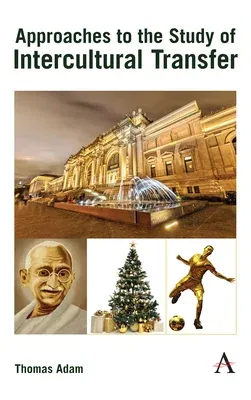"Approaches to the Study of Intercultural Transfer" presents a
collection of compelling case studies in the area of social reform,
museums, philanthropy, football, nonviolent resistance and holiday
rituals such as Christmas that demonstrate key mechanisms of
intercultural transfers. Each chapter provides the application of the
intercultural transfer studies paradigm to a specific and distinct
historical phenomenon. These chapters not only illustrate the presence
or even the depth and frequency of intercultural transfer, but they also
reveal specific aspects of the intercultural transfer of phenomena, the
role of agents of intercultural transfer and the transformations of
ideas transferred between cultures thereby, contributing to our
understanding of the mechanisms of intercultural transfers.
The transfers explored in this volume provide for a narrative of an
interconnected world in which societies and cultures exchanged ideas and
objects over long distances connecting places and spaces across the
globe and contributing to the creation of distinct local cultures and
societies. Ideas about social reform and customs such as the Christmas
tree were transferred across political and geographic borders. In the
process, they were modified to fit into the receiving society. They lost
some of their meaning and received new meaning. The Pagan symbol of the
Christmas tree was Christianized through its transfer from cities such
as Dresden to cities such as Boston.
Concepts such as Gandhi's nonviolent resistance appealed to many Western
observers who considered peaceful and rational conflict solution in the
aftermath of World War I as essential to the survival of humankind. The
appeal of nonviolent resistance did not result in a full grasp of such
phenomena. Western observers misunderstood and mistranslated Satyagraha
with passive resistance. Such modifications reveal the nature of
intercultural transfer. In this process, the power of adopting a new
idea rests with the receiving society. The giving society has little
influence over the transfer process and loses control over the transfer
fairly early. This contributed to the conundrum of the modern world
which, in spite of the multitude of such transfers, became not only more
similar but also more dissimilar.

